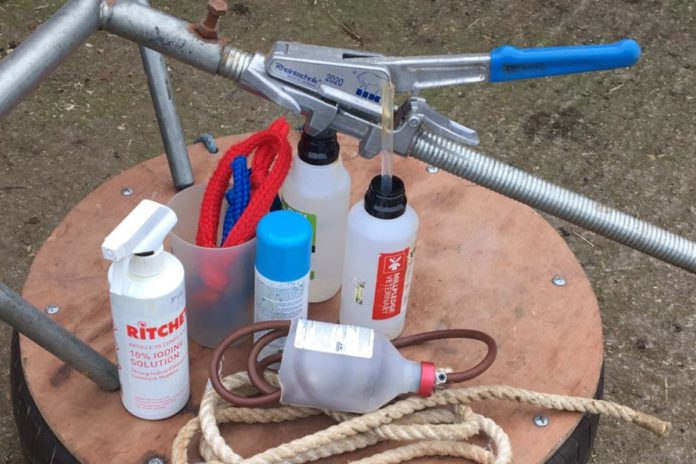Calving Equipment
That’s Farming editor, Catherina Cunnane, spoke to a number of veterinary practitioners in recent weeks and compiled the following article with tips for our readers ahead of calving 2023.
We have provided a summary of some basic items that you may need this calving season, but it is important to note that some enterprises may have additional requirements.
- Calving jack – “Regardless of what breeds you run or bulls you use, every farmer should have a calving jack.”
- Full-length disposable calving gloves – “Do not handle a cow without wearing calving gloves; one on each hand and wear a different set if you are handling another cow. Always dispose of gloves with caution.”
- Vet lube – Not washing-up liquid;
- Calving aid ropes – Have more than one set;
- A head rope – “Do not use if you do not know how to, as you can do more than damage than good.”
- Iodine – Spray on calves’ navels;
- Calcium and magnesium;
- Buckets for clean water;
- Calf bottle and teat;
- Infrared bulb – For ill calves;
- Flutter valve – “Every farmer should have access to a flutter valve.”
- Two stomach tubes – One specially for colostrum feeding and a second one just for sick calves to avoid cross-contamination. “A calf is born without a functioning immune system with no antibodies. If you are using the same stomach tube for sick calves as new-born calves, you are basically going to cross-contaminate and infect your new-born calf.” Read a previous article on colostrum for calves being ‘nature’s gift’. One the vets we spoke to stressed that “stomach tubing a calf is a fairly easy procedure, but is not a task that farmers should attempt to undertake if they are unsure. Get your vet to demonstrate best practice before you undertake this yourself.”
- Colostrum powder – “Obviously, natural is best, but this may not always be an option as colostrum may be unavailable or of poor quality. There are some powdered products on the market, but farmers should read product labels carefully to ensure they contain desirable high-quality ingredients, as there are notable variations between products. In a lot of cases, if you look at the product label, ingredients are listed in order of composition. Also, with calves, advocate the 1-2-3 rule.”
- Oral nutritional supplements for calves – “Some farmers would consider these to be like an insurance measure. Most products on the market would contain probiotics, minerals, vitamins, and egg proteins.”
- Digital thermometer – Read our article on how to take an animal’s temperature.
- Calf jackets – “Some farmers put calf jackets on their calves as soon as they are dry. They can help maintain body heat, which enables calves to put their energy into growth instead of temperature regulation and also to protect calves during temperature fluctuations. Jackets are easy to fit, water resistant, are made of breathable material and are machine washable. It is extremely important to wash calf jackets.”
- Disinfectant – “Clean out and disinfect calving pens after each calving. There are some specialised broad-spectrum disinfectant products on the market, and farmers should not underestimate the benefits of lime. Disinfect all surfaces, walls, floors, equipment, and tools that have come in contact with your calves and cows.”
- Calving whiteboard – “This can be a cost-effective, practical management tool, which may be beneficial, especially where you have a team of people managing a farm or you have a large volume of cows calving in a small window. They are becoming more of a common sight on dairy enterprises, and an increased number of suckler-beef farmers are also opting for same.”;
- Calf scour test kits – “A calf scour test kit is a useful and accurate diagnostic tool to detect Cryptosporidium, Rotavirus, Coronavirus and E. coli F5 (K99). Farmers can perform the test themselves on-farm, and only need to take a single sample for a calf to test for all four. They are easy to use, and you can have results within a ten-minute window. This will allow you to identify the type of scour you are dealing with and help determine the best course of action, at which point you should seek veterinary advice. Not knowing what type of scour your calf is like shooting in the dark; you could be using a product that will not treat the actual type of scour they are suffering from.”
- Electrolyte/ kaolin powder – “These may be options for calves suffering from dehydration caused by the likes of scour, digestive upsets, and stress. Again, always speak to you vet when it comes to your choice of treatment.”
Note: Always seek your veterinary practitioner’s advice.





